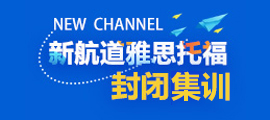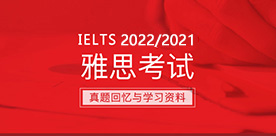雅思閱讀真題考試題庫:Antifraud Measure Ineffective原文+答案解析
2017/5/27 16:42:30來源:新航道作者:新航道
摘要:上海新航道培訓學校小編給考生們帶來了雅思閱讀真題題庫之Antifraud Measure Ineffective原文+答案解析,希望備考雅思考試的同學們一定要認真的看題、做題,多研究積累才能實現自我提升,預祝各位考生都取得理想的成績。
上海新航道培訓學校小編給考生們帶來了雅思閱讀真題題庫之Antifraud Measure Ineffective原文+答案解析,希望備考雅思考試的同學們一定要認真的看題、做題,多研究積累才能實現自我提升,預祝各位考生都取得理想的成績。
Antifraud Measure Ineffective反欺詐措施無效
Internet security experts have long known that simple passwords do not fully defend online bank accounts from determined fraud artists.
Now a study suggests that a popular secondary security measure provides little additional protection.
The study, produced jointly by researchers at Harvard and the Massachusetts Institute of Technology, looked at a technology called site-authentication images. In the system, currently used by financial institutions like Bank of America, ING Direct and Vanguard, online banking customers are asked to select an image, like a dog or chess piece, that they will see every time they log in to their account.
The idea is that if customers do not see their image, they could be at a fraudulent Web site, dummied up to look like their bank’s, and should not enter their passwords.
The Harvard and M.I.T. researchers tested that hypothesis. In October, they brought 67 Bank of America customers in the Boston area into a controlled environment and asked them to conduct routine online banking activities, like looking up account balances. But the researchers had secretly withdrawn the images.
Of 60 participants who got that far into the study and whose results could be verified, 58 entered passwords anyway. Only two chose not to log on, citing security concerns.
“The premise is that site-authentication images increase security because customers will not enter their passwords if they do not see the correct image,” said Stuart Schechter, a computer scientist at the M.I.T.Lincoln Laboratory. “From the study we learned that the premise is right less than 10 percent of the time.”
He added: “If a bank were to ask me if they should deploy it, I would say no, wait for something better,” he said.
The system has some high-power supporters in the financial services world, many trying to comply with new online banking regulations. In 2005, the Federal Financial Institutions Examination Council, an interagency body of federal banking regulators, determined that passwords alone did not effectively thwart intruders like identity thieves.
It issued new guidelines, asking financial Web sites to find better ways for banks and customers to identify each other online. January 2007 was set as the compliance date, though the council has yet to begin enforcing the mandate.
Banks immediately knew what they did not want to do: ask customers to download new security software, or carry around hardware devices that feed them PIN codes they can use to authenticate their identities. Both solutions would add an extra layer of security but, the banks believed, detract from the convenience of online banking.
The image system, introduced in 2004 by a Silicon Valley firm called PassMark Security, offered banks a pain-free addition to their security arsenals. Bank of America was among the first to adopt it, in June 2005, under the brand name SiteKey, asking its 21 million Web site users to select an image from thousands of possible choices and to choose a unique phrase they would see every time they logged in.
SiteKey “gives our customers a fairly easy way of authenticating the Bank of America Web site,” said Sanjay Gupta, an e-commerce executive at the bank. “It was very well received.”
The Harvard and M.I.T. researchers, however, found that most online banking customers did not notice when the SiteKey images were absent. When respondents logged in during the study, they saw a site maintenance message on the screen where their image and phrases should have been pictured. The error message also had a conspicuous spelling mistake, further suggesting something fishy.
Mr. Gupta of Bank of America said he was not troubled by the results of the survey, and stressed that SiteKey had made the bank’s Web site more secure. He also said that the system was only a single part of a larger security blanket. “It’s not like we’re betting the bank on SiteKey,” he said.
Most financial institutions, like Bank of America, have other ways to tell if a customer is legitimate. The banks often drop a small software program, called a cookie, onto a user’s PC to associate the computer with the customer. If the customer logs in from another machine, he may be asked personal questions, like his mother’s maiden name.
Rachna Dhamija, the Harvard researcher who conducted the study, points out that swindlers can use their dummy Web sites to ask customers those personal questions. She said that the study demonstrated that site-authentication images are fundamentally flawed and, worse, might actually detract from security by giving users a false sense of confidence.
RSA Security, the company that bought PassMark last year, “has a lot of great data on how SiteKey instills trust and confidence and good feelings in their customers,” Ms. Dhamija said. “Ultimately that might be why they adopted it. Sometimes the appearance of security is more important than security itself.”
雅思題目+答案解析
Questions 1-5 Do the following statements agree with the information given in the passage? Please write TRUE if the statement agrees with the writer FALSE if the statement does not agree with the writer NOT GIVEN if there is no information about this in the passage
1.According to internet security experts, secondary security measures provide little additional protection against fraud.
2.In the Harvard and MIT study, two subjects didn’t log on without seeing the correct pictures.
3.According to Schechter, more than 90% of online banking customers studied logged on without seeing the right pictures.
4.The image system is the only security measure that the banks mentioned in the passage have currently.
5.Bank of America is the first bank that adopted the image system.
Questions 6-13 Answer the following questions or complete the following sentences by choosing NO MORE THAN THREE WORDS for each answer.
6.What is ING Direct and Vanguard?
7.What might online banking customers be cheated to give at a fraudulent Web site?
8.What may stop online banking customers from using new verification methods?
9.The key to online banking security is to verify the ______ of customers.
10.Where is PassMark Security located?
11.What is the reason why SiteKey is popular among online banking customers?
12.What was used instead of images in the Harvard and M.I.T. study?
13.How many security methods are mentioned in this passage?
Answer keys
1. 第一段“Now a study suggests that a popular secondary security measure provides little additional protection.”似與問題文字很接近,但是原文中 a popular secondary security measure 是指特定的一個措施,而非泛指所有 secondary security measure。原文沒有其它 secondary security measure 安全有效性的內容。故應選擇 NG。
2. 見第 4、5 段內容。第四段 “But the researchers had secretly withdrawn the images.”即研究人員撤下了圖形,第五段“Only two chose not to log on, citing security concerns.”,有兩個人因為安全考慮未進入。
3. T 見第 6 段。
4. F 見第 11、14 段。
5. F 見第 11 段“Bank of America was among the first to adopt it”,可見首批采用圖形識別軟件的銀行并非 Bank of America 一家。
6. A financial institution 見第二段。
7. (their) passwords 見第三段。
8. less convenience 見第十段。
9. identity 見第八、十段。
10. Silicon Valley 見第十一段。
11. easy to use 見第十二段。
12. site maintenance message 見第十三段“When respondents logged in during the study, they saw a site maintenance message on the screen where their image and phrases should have been pictured.”
13. 4 分別見第十段的“download new security software”和“hardware devices that feed them PIN codes”,第十五段的“a small software program, called a cookie”,以及本文提到的 site-authentication images。
以上就是上海新航道雅思給大家分享的雅思閱讀真題考試的答案解析,更多的雅思閱讀資料,請點擊:雅思閱讀頻道。
免費獲取資料
熱報課程
- 雅思課程
| 班級名稱 | 班號 | 開課時間 | 人數 | 學費 | 報名 |
|---|
免責聲明
1、如轉載本網原創文章,情表明出處
2、本網轉載媒體稿件旨在傳播更多有益信息,并不代表同意該觀點,本網不承擔稿件侵權行為的連帶責任;
3、如本網轉載稿、資料分享涉及版權等問題,請作者見稿后速與新航道聯系(電話:021-64380066),我們會第一時間刪除。
全真模擬測試
制作:每每









